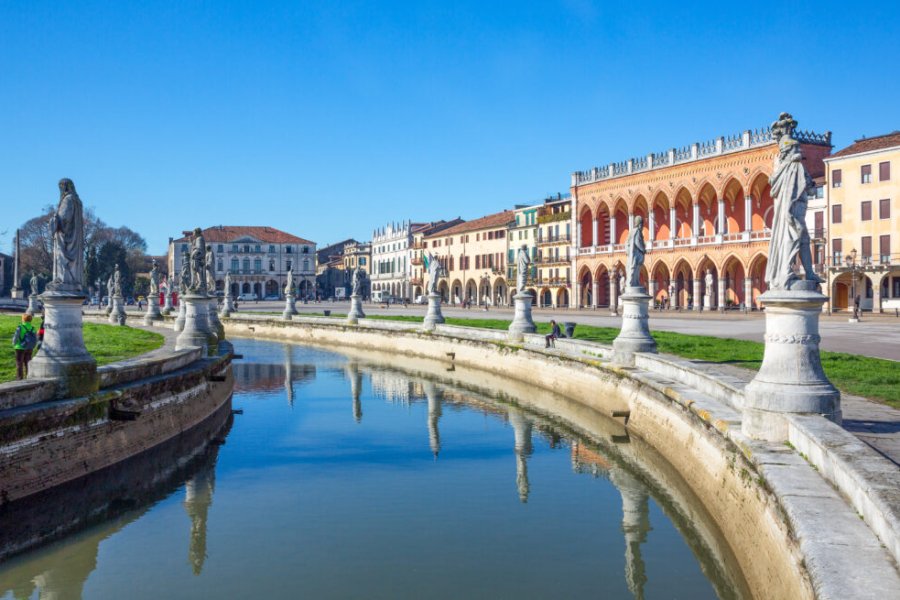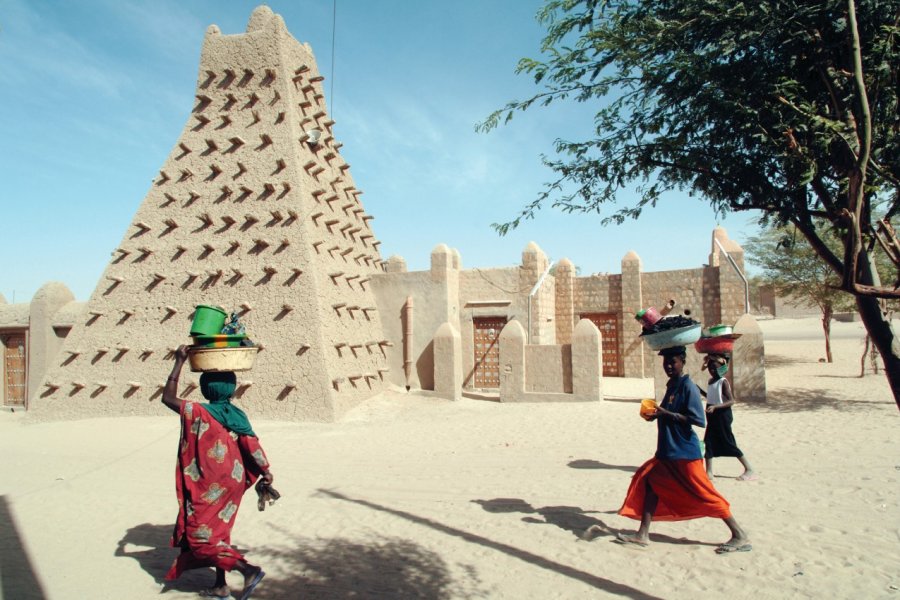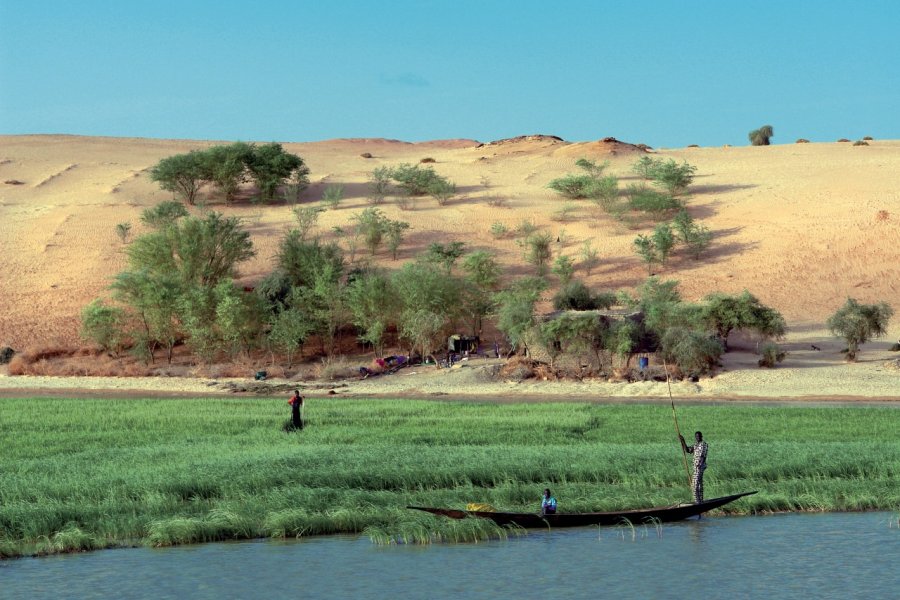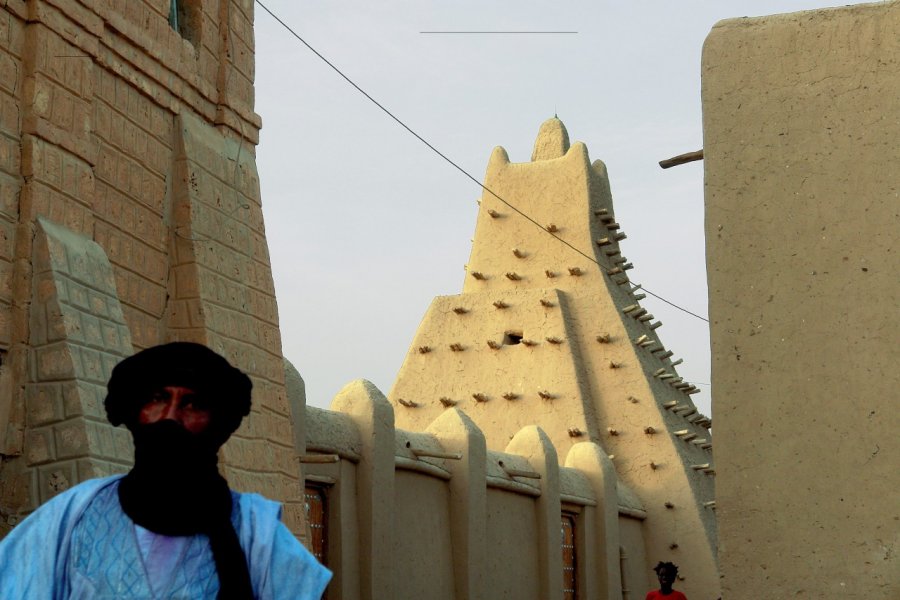Travel Guide Timbuktu
Find an accommodation
Advertising
Timbuktu, the mysterious city! The name of Timbuktu is known worldwide. " City exquisite, pure, delicious, illustrious, quoted rich and lively… "says columnist Aberhaman Sâli, author of Tarikh es Sudan circa 1630. This city? Europe for several centuries. Many countries sent their explorers to be the first to discover this mythical city. French René Caillié, the first explorer to enter the city, and especially to be out alive, was very disappointed, like many visitors today, entering Timbuktu. In his story of travel, he wrote about this: "(...) Income from my enthusiasm, I found that the show I had before my eyes did not meet my expectations. I had made the greatness and richness of this city a completely different idea, offering, in the first aspect, only a pile of houses in the earth, badly constructed. In all directions, you can see only huge plains of shifting sand, a white white drawing on the yellow, and the largest dryness. The sky, on the horizon is a pale red, everything is sad in nature, the greatest silence there, we do not hear the song of one bird. However, I do not know what to do to see such a large city in the middle of the sands, and admire the efforts of its founders. '»»»»Nevertheless, Timbuktu remains one of the most beautiful cities on the African continent. The city was classified in 1992 as a UNESCO World Heritage Site by UNESCO. In 2007, it was the only city on the continent to compete for the title - unofficial - of the eighth wonder of the world. Built in the middle of the desert, Timbuktu has very beautiful stone mansions with a Moroccan and Moroccan architectural style. The city, also known as the city of the three hundred and thirty-three saints, houses many beautiful mosques and a university that has made the Sudan the glory of the Sudan throughout the World. But this city must attract visitors more to the exceptional quality of the site that surrounds it. Timbuktu is also the name of the seventh region of Mali, the largest. The town of Timbuktu is just a few hours'drive from the real Sahara, and the grandiose spectacle of the dunes extending to infinity. It is easy to organize a méharée in the desert from here. Whether it's for a two-hour walk or for a one-month excursion in the footsteps of the azalaï, a caravan that transports the salt bars from Taoudénit to Timbuktu, you will find a guide and a herder that will teach you the camels. Visitors, when they return from the desert, are always very moved by the experience they experienced. A sense of calm and infinity emerges from the Sahara, and lives for the people who chose to discover this ocean of sand.History. Timbuktu is a deformation of the word tamashek "tim Buctou" meaning "the well of Buctou." Timbuktu was founded in the th century by the Tuareg imakeharen, who discover the site. The area serves as a warehouse for oversized baggage, which slows down the caravans between the river and the Azaouad. An old woman named Buctou watches this material, and that is how a small village of sedentary land becomes the most famous commercial and religious metropolis in Sudan. The beginnings of the city's history remain unclear. We know, however, that the city was integrated around 1275 into the empire of Mali and that Kankou Moussa stopped in 1325 when he went on pilgrimage to Mecca.At this time, Timbuktu is still only an oasis through which travellers cross the desert. Although already strategically powerful it is not yet an important commercial crossroads.Towards the end of the th century, Timbuktu saw its influence grow. The region of the Akan forest producing at this time of more and more gold, to respond to the growing demand of Europeans, Tombouctou becomes the natural meeting point between gold merchants and salt merchants. It then recovers this trade to the detriment of cities better located than it, prior to the disruption of the geography of gold production sites. By its exceptional geographical position, located at the same time on the banks of the River Niger, at the door of the desert and at the borders of the Sudanese fertile area, Timbuktu is a first-class commercial centre where the gold of Akan forest and Thégazza salt, as well as Livestock and Cereals, are exchanged. The growth of Timbuktu is first assured by the protection of the Empire of Mali. In 1468, the city was conquered by Sonni Ali Ber. Under the songhai administration, the city will still prosper, seeing constantly growing the variety of goods in transit.The salt trade is growing and the caravans, the more and more azalaï, sail through the Sahara towards Timbuktu. The market in the city is filled with fabrics, silk, spices, kola, tin, copper from the Maghreb, gold, ivory, Arab horses, ostrich feathers and slaves captured in the tropical zone. Thanks to this prodigious economic development, Timbuktu became a high place of Islamic culture from the th century and will have up to Koranic schools, twenty-five thousand students and many libraries. Scientists and poets from all over the world are getting refuge.All these factors will help make the city an international centre of thought and science. The mosques of Djingareiber and Sidi Mahmassani were thus important centres of intellectual and spiritual development. The most famous (and prolific) intellectual of Timbuktu is Ahmed Baba. He is the author of the greatest writings of theology and law produced by Timbuktu. The golden age of the city can be found between 1493 and 1591, when the city escapes from the Askia dynasty to pass under Moroccan influence.Two factors will contribute to the fall of Timbuktu: the Moroccan conquest, which leads to the decadence of the city, and the installation of the European counters on the coast, moving the axes of transport of the goods from the desert to the sea. After defeating the songhai troops in Tondibi and occupied the town of Gao, Spanish mercenaries on the balance of Moroccans entered the city on 30 May 1591. The houses are looted, the intellectuals are slaughtered or deported. The Moroccan presence is less effective than that of the Songhai. The Pasha and their descendants, the Arma, will prove incapable of protecting the city against its enemies. Despite its decline, the city continues to be coveted by other peoples. The bambara, fulani and Tuareg raids follow. In 1737, the Tuareg regained the city of the Arma. In 1863, the armies of El Hadj Omar Tall occupied it and incorporated it into the Toucouleur Empire until the arrival of the French, who took possession of Timbuktu from 1893. Today, the city is the capital of the seventh region of Mali. His glorious past turned out. While some salt caravans continue to do this, the city's first resource is tourism today. Nevertheless, the shadow of this past still floats.A Sudanese adage of the th century said about Timbuktu: " The salt comes from the north, gold comes from the south and money from the country of the whites, but God's word, learned things, stories and pretty tales are only in Timbuktu. '»»»»
What to visit Timbuktu?
Advertising
Weather at the moment
Advertising
Organize your trip with our partners Timbuktu
Transportation
Book your plane tickets
Car Rental
Boat rental
Accommodation & stays
Find a hotel
Holiday rental
Find your campsite
Tailor-made trip
Immersion travel
Services / On site
Activities & visits
Find a doctor
Timbuktu travel inspiration
Find unique Stay Offers with our Partners
Pictures and images Timbuktu
Other destinations nearby Timbuktu
100 km away















